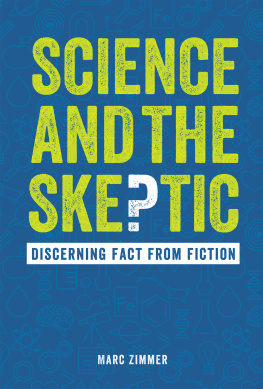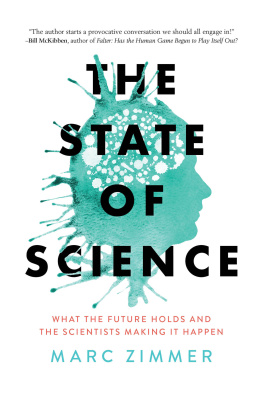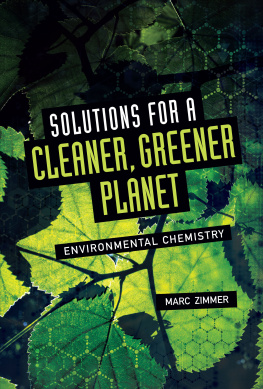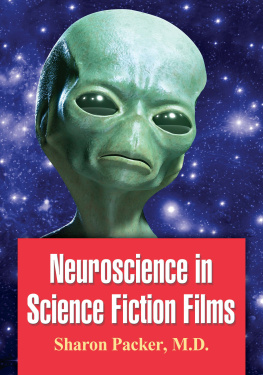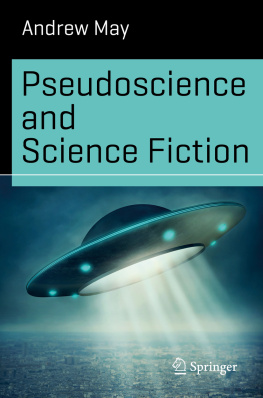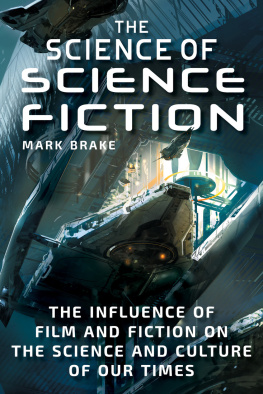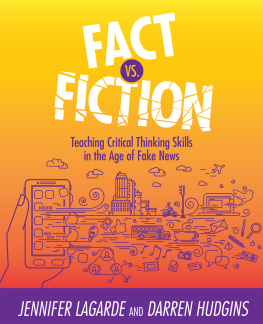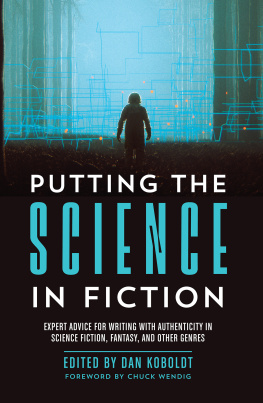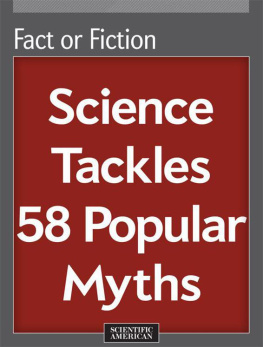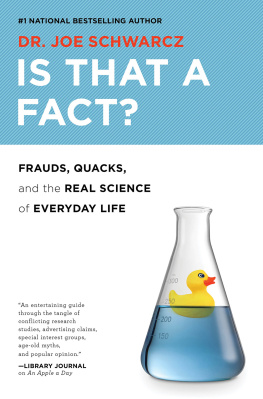To my father
Text copyright 2022 by Marc Zimmer
All rights reserved. International copyright secured. No part of this book may be reproduced, stored in a retrieval system, or transmitted in any form or by any meanselectronic, mechanical, photocopying, recording, or otherwisewithout the prior written permission of Lerner Publishing Group, Inc., except for the inclusion of brief quotations in an acknowledged review .
Twenty-First Century Books
An imprint of Lerner Publishing Group, Inc.
241 First Avenue North
Minneapolis, MN 55401 USA
For reading levels and more information, look up this title at www.lernerbooks.com .
Main body text set in Avenir LT Pro.
Typeface provided by Linotype AG.
Library of Congress Cataloging-in-Publication Data
Names: Zimmer, Marc, author.
Title: Science and the skepti c : discerning fact from fiction / Marc Zimmer.
Description: Minneapoli s : Twenty-First Century Books, [2022 ] | Includes bibliographical references and index . | Audience: Ages 131 8 | Audience: Grades 101 2 | Summary: Covering how science is done, why some people want to trick others, and why false information can be dangerous, this book empowers readers to know which sources to trust and which to dismiss as deceit Provided by publisher.
Identifiers: LCCN 2021013452 (print ) | LCCN 2021013453 (ebook ) | ISBN 781728419459 (library binding ) | ISBN 781728445434 (ebook)
Subjects: LCSH: ScienceJuvenile literature . | PseudoscienceJuvenile literature . | Fraud in scienceJuvenile literature.
Classification: LCC Q163 .Z55 2022 (print ) | LCC Q163 (ebook ) | DDC 500dc23
LC record available at https://lccn.loc.gov/2021013452
LC ebook record available at https://lccn.loc.gov/2021013453
Manufactured in the United States of America
1-49068-49266-8/30/2021
Contents
Chapter 1
What Is Science?
To distinguish between science and fake science, we need to know what science is. Science has many definitions, but most people agree that science is the process of understanding the natural world by interpreting the results of experiments.
Before 1833 people who conducted experimentsthose who mixed, observed, and synthesized chemicalswere called natural philosophers. Famous figures such as Galen (ca. 129210), Galileo Galilei (15641642), and Sir Isaac Newton (16421727) were all natural philosophers. The term science existed, but there was no common term for all the people who did science. In 1833 William Whewell, a professor at Cambridge University, coined the term scientist to highlight that these were empirical folks, people who relied on experiments to build knowledge, rather than philosophers, or people who dealt strictly with ideas.
Generally, scientists follow the scientific method to discover facts about nature. In this procedure, scientists begin with all the knowledge they already have to make an educated guess, or a hypothesis, about a new observation or phenomenon that has yet to be explained. According to the philosopher of science Karl Popper (19021994), for a hypothesis to be truly scientific, there must be an experiment that would disprove it. For example, scientists cannot conduct an experiment that would show whether a sunset is beautiful or not, because there is no way to prove or disprove beauty. Therefore, the study of beauty is not science.
But the study of gravitational waves, ripples in space-time that are produced by massive objects moving at extreme accelerations, such as colliding black holes, is science. When Albert Einstein (18791955) hypothesized the existence of gravitational waves in 1916, he didnt think we would ever be able to detect these waves because they are so minute. In theory (and in practice), gravitational waves regularly pass through us and stretch and squeeze us by amounts so small that we cant feel the changes. Despite this hurdle, their existence was provableall scientists had to do was create the technology needed to measure such tiny changes. In 2015, as a result of the worlds largest and most expensive experiment, scientists measured gravitational waves for the first time. The waves had traveled for 1.3 billion years before passing Earth on their way through space. It took billions of dollars and almost one thousand people to prove that gravitational waves from faraway, massive objects in space hit Earth every few weeks. Since then, scientists have detected them regularly. Because the existence of these strange, barely detectable waves was disprovable, the prediction that they existed was a scientific hypothesis. Once scientists measured and detected them, their existence became scientific fact. If the experiment had not detected gravitational waves, then the existence of the waves would have been disproven and the hypothesis would have been wrong.
After conducting an experiment, scientists interpret the results and decide if they proved the hypothesis. Usually, experimental results come in the form of measurements. To detect gravitational waves, scientists from the United States, the United Kingdom, Germany, and Australia collaborated on the Laser Interferometer Gravitational-Wave Observatory (LIGO). LIGO consists of two 2.5-mile-long (4 km) L-shaped vacuum chambers. One is in Louisiana, and the other is 1,865 miles (3,002 km) away in Washington State. The vacuum chambers are housed in 12-foot-tall (3.6 m) concrete pipes that have to be raised a little less than 3 feet (1 m) at their ends to account for Earths curvature. Gravitational waves that originate billions of light-years from Earth distort the 2.5-mile-long mirror spacing at the ends of the vacuum chambers by about 0.001 times the width of a proton. To ensure these minuscule distortions arent caused by local car crashes, earthquakes, and other disturbances on Earth, the two LIGO detectors were constructed far apart. Therefore, if the scientists observed the same distortion at both LIGO detectors and the distortions occurred ten milliseconds apart (the time it takes to travel 1,865 miles [3,002 km] at the speed of light), then they had detected a gravitational wave.
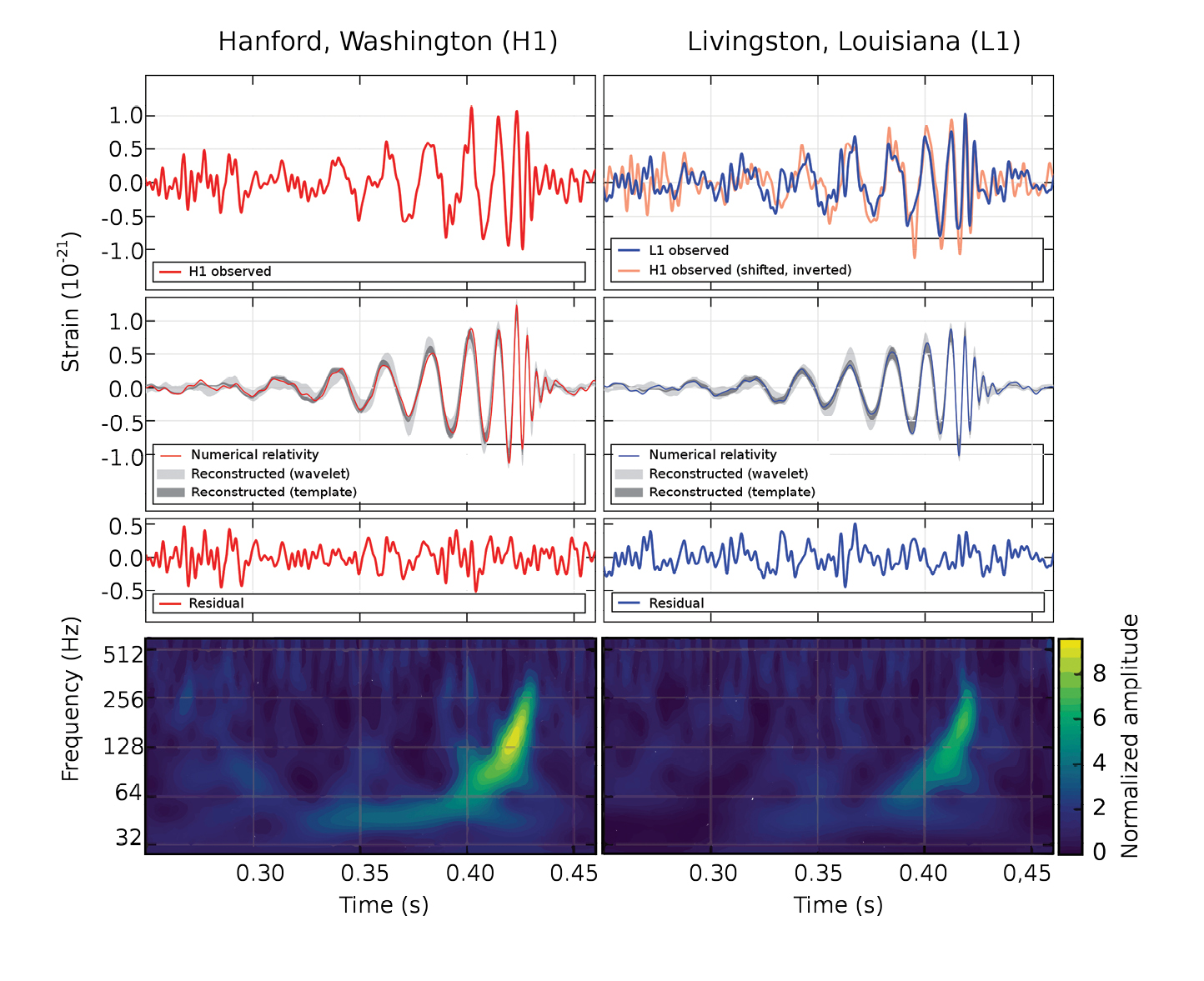
Pictured above are the results from the September 2015 LIGO detection of gravitational waves. Both detectors saw an increase in the intensity of the wave signal, corresponding to the merging of two black holes. The signals were observed about seven milliseconds apart, the time it took for the waves to travel the 1,865 miles (3,002 km) between the two LIGO sites.
On Monday, September 14, 2015, at 4:51 a.m. in Louisiana, a gravitational wave arrived from 1.3 billion light-years away, stretching and squeezing space itself, including the lasers, first at the Louisiana site and then seven milliseconds later at the Washington site. Everyone involved with the project in the United States was sleeping. In Germany it was 11:51 a.m., time for lunch. Marco Drago, a young physicist working at the Max Planck Institute for Gravitational Physics in Hannover, Germany, looked at the data coming from LIGO. He immediately recognized the gravitational wave pattern predicted by computer simulations. One of Dragos colleagues contacted the LIGO operations room in Louisiana. Everyone was sworn to secrecy while the LIGO researchers checked and rechecked the data. The signal wasnt a test, and it wasnt noise. It was the real thing, a gravitational wave. By February 2016, five months after the signal was observed, everyone involved was convinced it was real, and the researchers held a press conference to announce that they had detected Einsteins gravitational waves. Meanwhile, they published a paper in Physical Review Letters describing the findings. It had more than one thousand authors.

